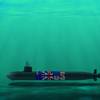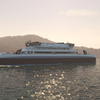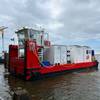A federal plan to screen port workers could have unintended consequences for some local shipyards - driving up the cost to build and repair Navy ships while doing nothing to improve security, industry officials say.
The new worker credential system, expected to take effect next year, is aimed at beefing up security at ports to guard against terrorism.
Longshoremen, truckers and other transportation workers needing unescorted access to secure areas of the ports will have to obtain new biometric identification cards, requiring them to undergo FBI background checks and to submit fingerprints that will be embedded on the new cards.
As written, however, the federal law also extends to some shipyards, including Navy shipbuilder Northrop Grumman Newport News, the region's largest private employer, and its 19,000 workers.
Since its unveiling this year, the federal rule has created confusion among the region's ship repair yards: Some say they apparently fall under the law, others say they do not.
Industry officials argue that local shipyard workers, who are not in the business of transporting cargo, should be exempt from the new provisions.
They say Northrop Grumman and the region's ship repair yards are now subject to security requirements set by their biggest customers, the Navy and the Department of Defense, that are more stringent than the proposed credential system.
As such, they contend that the new screening system - the Transportation Worker Identification Credential, known by its acronym TWIC - would be redundant, impose unnecessary costs and fail to improve security.
Ultimately, any additional cost would fall on the Navy and taxpayers, industry officials said.
Northrop Grumman Newport News has estimated its own cost of implementing the screening program at $12.8 million, including the installation of machines to read the new biometric identification cards. The shipbuilder says ongoing costs to administer the program could run nearly $7 million a year.
The American Shipbuilding Association, a trade group that represents the nation's six major Navy shipbuilders, has estimated that the 10-year costs industrywide could exceed the price tag of a Navy combatant ship.
The proposed rules for the TWIC program were published in May by the Coast Guard and the Transportation Security Administration, which are charged with overseeing the federal program.
While the new security efforts are geared toward port workers, some shipyards, other marine facilities and vessels fall under the Maritime Transportation Security Act of 2002 - the law that outlined the need for a new credential card system, said Angela McArdle, a spokeswoman for the Coast Guard in Washington.
The law applies to shipyards capable of transferring more than 10,500 gallons - or 250 barrels - of fuel oil or other hazardous materials, McArdle said. Having that ability, the Coast Guard says, makes the yards more vulnerable to terrorist attacks or natural disasters such as hurricanes.
(Source: www.PilotOnline.com)
Subscribe for
Maritime Reporter E-News
Maritime Reporter E-News is the maritime industry's largest circulation and most authoritative ENews Service, delivered to your Email five times per week










